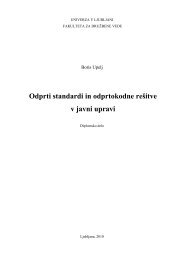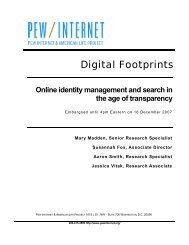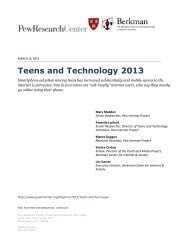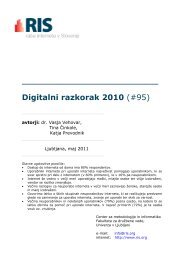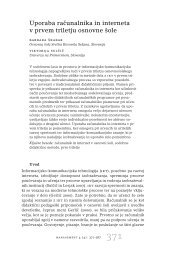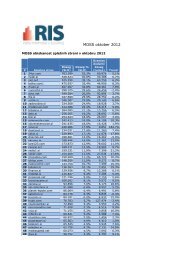the Labour Market Survey Report - Council of European ...
the Labour Market Survey Report - Council of European ...
the Labour Market Survey Report - Council of European ...
Create successful ePaper yourself
Turn your PDF publications into a flip-book with our unique Google optimized e-Paper software.
The findings <strong>of</strong> <strong>the</strong> NOP survey were also fed into a significant review <strong>of</strong> secondary research, carried<br />
out by <strong>the</strong> Institute <strong>of</strong> Employment Studies at <strong>the</strong> University <strong>of</strong> Sussex (also in <strong>the</strong> first half <strong>of</strong> 2001) that<br />
is written up as “An assessment <strong>of</strong> Skill Needs in Information and Communication Technology” (this is<br />
<strong>the</strong> report <strong>of</strong> <strong>the</strong> UK Government’s “Skills Dialogue” work for <strong>the</strong>se sectors). The five main conclusions<br />
to emerge from this work were:<br />
• Demand for pr<strong>of</strong>essional ICT skills continues to expand (for both fundamental operating<br />
systems and programming languages, as well as new Internet-related skills)<br />
• Supply is starting to respond, as university output increases and o<strong>the</strong>r channels open up;<br />
• Skill deficits still persist, through external recruitment shortages and internal skill gaps;<br />
• However <strong>the</strong> worst <strong>of</strong> <strong>the</strong> recent skill shortage crisis appears to have passed, as demand slows<br />
down and supply catches up; and<br />
• Concern is switching from inadequacies in <strong>the</strong> quantity to <strong>the</strong> quality <strong>of</strong> skills supply.<br />
From <strong>the</strong> data ga<strong>the</strong>red for this study, as compared with <strong>the</strong> situation in some o<strong>the</strong>r EU Member States,<br />
<strong>the</strong> Computing Pr<strong>of</strong>essional (ISCO 213) community in <strong>the</strong> United Kingdom appears, over <strong>the</strong> second<br />
half <strong>of</strong> <strong>the</strong> 1990s, to have had <strong>the</strong> following characteristics (see Section 4.6 and Annex E for detailed<br />
charts):<br />
• a comparatively low fraction <strong>of</strong> women in this employment (Figures 9 and E-1);<br />
• above average in terms <strong>of</strong> <strong>the</strong> fraction <strong>of</strong> younger workers (Figures 10 and E-2);<br />
• a relatively high percentage <strong>of</strong> Self-employed Computing Pr<strong>of</strong>essionals (Figures 11 and E-5);<br />
• below average in terms <strong>of</strong> share <strong>of</strong> employment within <strong>the</strong> IS Industry (i.e. IT supply companies)<br />
(Figures 12 and E-4); and<br />
• a relatively high %age <strong>of</strong> Computing Pr<strong>of</strong>essionals in training (Figures 16 and E-8).<br />
Overall, in terms <strong>of</strong> <strong>the</strong> fraction <strong>of</strong> <strong>the</strong> national employed population working in <strong>the</strong> ISCO 213 occupation<br />
(<strong>the</strong>re were no UK returns for ISCO 312), <strong>the</strong> position in <strong>the</strong> UK is understandably relatively strong in<br />
<strong>the</strong> Computing Pr<strong>of</strong>essional community – significant growth over recent years, and positioned second<br />
overall behind Sweden.<br />
Detailed analyses <strong>of</strong> <strong>the</strong> British Computing Pr<strong>of</strong>essional workforce are provided in Annex E, toge<strong>the</strong>r<br />
with employment level scenarios relating to <strong>the</strong> four growth rates developed in Section 5.<br />
56<br />
| C E P I S I.T. PRACTITIONER SKILLS IN EUROPE | Section 4



